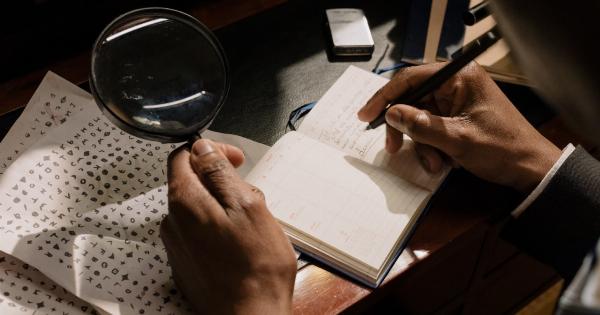Booking a first appointment can be a nerve-wracking experience, whether it’s with a potential client, a prospective employer, or even a first date.
Making a good impression and setting the stage for a successful outcome requires careful planning and consideration. While various factors come into play when determining the ideal prime time for a first appointment, certain general guidelines can help maximize your chances of success.
In this article, we will explore the best times for a successful first appointment and provide insights and tips for optimizing your initial meetings.
Understanding the Importance of Timing
Timing plays a crucial role in the success of any appointment. Showing up at the right time not only demonstrates your professionalism but also sets the tone for the entire interaction.
In the context of a first appointment, it’s essential to choose a time when both parties are likely to be fully present, focused, and open to engaging in a meaningful conversation.
Consider the Nature of the Appointment
The type of appointment you are scheduling influences the prime time for a successful outcome.
For instance, if it’s a business meeting, it’s generally recommended to avoid scheduling it during the early morning or late afternoon when people may still be settling in or rushing to wrap up their workday.
Instead, aim for the mid-morning or mid-afternoon when people tend to be more alert and receptive.
If it’s a personal appointment, such as a first date, it’s best to schedule it during the evening when both parties are likely to be more relaxed and in a social mindset.
Factor in Personal Preferences
Understanding the personal preferences of the other party can significantly impact the success of a first appointment.
For instance, if you know that the person you are meeting is a morning person, scheduling an early morning appointment might be a wise choice. On the other hand, if they are known to be more productive and alert in the afternoon, schedule accordingly.
Consider their geographical location as well. If you are meeting someone from a different time zone, make sure to account for the time difference when deciding on the appointment time.
Time Allocation for Preparation
Giving yourself enough time to adequately prepare for the first appointment is crucial.
Whether it involves researching the company you are interviewing with or familiarizing yourself with the potential client’s needs and expectations, preparation is key to making a positive impression.
Set aside enough time in your schedule to gather the necessary information, practice your pitch, and ensure you are well-prepared to address any questions or concerns that may arise during the appointment.
Minimize Distractions
Avoid scheduling a first appointment during peak hours when distractions are more likely to arise.
For example, if it’s a business meeting, avoid booking it during lunchtime when people may be preoccupied with hunger or during the early afternoon when post-lunch fatigue can set in.
Similarly, consider potential external distractions. If you are meeting in a public place, try to select a time when the venue is typically less crowded or noisy, ensuring a more conducive environment for a productive conversation.
Consider Cultural and Industry Norms
Cultural and industry norms may impact the prime time for a successful first appointment. For instance, in some cultures, it’s customary to schedule meetings in the morning, while in others, late afternoon meetings may be more acceptable.
Additionally, certain industries have specific norms regarding appointment scheduling. For example, if you are in the healthcare industry, early morning appointments may be preferred by many patients.
Understanding these norms and adapting your scheduling accordingly can help create a more positive and comfortable experience for all parties involved.
Be Mindful of Chronotypes
Chronotypes refer to an individual’s natural inclination towards specific sleep patterns. Some people are naturally early birds, while others are night owls.
Understanding the chronotype of the person you are meeting can help you determine the prime time for a successful first appointment.
While it’s challenging to know the exact chronotype of the other party, general observations can provide useful insights. For instance, if the person tends to respond to emails or messages late at night, they might identify more as a night owl.
Adjusting the appointment time to align with their natural tendencies can help create a more comfortable and engaging experience for everyone involved.
Importance of Flexibility
Finding the perfect prime time for every appointment may not always be feasible, especially when scheduling conflicts arise or when dealing with individuals who have busy or unpredictable schedules.
Being flexible and open to finding a mutually convenient time can help ensure the success of your first appointment.
When faced with scheduling challenges, try to find alternative solutions that meet the needs of both parties involved. Consider utilizing scheduling tools and platforms that allow for seamless coordination and offer options for rescheduling if needed.
Effective Communication is Key
Clear and effective communication also plays a crucial role in ensuring the success of a first appointment. Once the appointment is scheduled, confirm the details in writing, including the date, time, and location.
This helps eliminate any potential misunderstandings or confusion and allows both parties to prepare accordingly.
Additionally, if any changes or unforeseen circumstances arise, communicate promptly and reciprocate the same level of understanding and flexibility you would expect from the other party.
Clear communication fosters trust and sets a positive tone even before the actual appointment takes place.
Tailor your Approach
Every first appointment is unique, and what works well for one person or situation may not be as effective for another. It’s essential to tailor your approach and timing based on the specific context and the preferences of the other party.
Take the time to understand the objectives and expectations of the first appointment, and adapt your scheduling and preparation accordingly.
By demonstrating your willingness to customize your approach, you are already setting a positive foundation for a successful outcome.
Conclusion
In conclusion, the prime time for a successful first appointment depends on various factors such as the nature of the appointment, personal preferences, preparation time, and cultural norms.
By carefully considering these factors, staying flexible, and effectively communicating, you can enhance your chances of a positive outcome.
Remember, the goal of a first appointment is to make a lasting impression, establish rapport, and set the stage for a productive relationship.
Invest time and effort in the planning stage, and you’ll be well on your way to achieving your desired outcome and setting the tone for future interactions.






























